Driving through South Africa experience feature
1,100km in South Africa, mainly on ocean-hugging roads, in a Mercedes GLC.
Published On Sep 09, 2017 06:00:00 AM
8,721 Views
Follow us onThe simple task of opening and shutting a car door – something you don’t even give a second thought to – turned out to be a major exercise on our first day in Cape Town. I had to use both my hands and all my strength to battle the gale-force winds that threatened to rip the doors off their hinges; imagine explaining that to Avis from whom we hired a spanking new Mercedes GLC 250d for a week-long drive in South Africa. The GLC rocked on its Pirelli tyres, and not since it was honed in the wind tunnel would have the GLC’s drag coefficient of 0.31 been checked out so vigorously. As for myself, I was happy, for once, to weigh all of 92kg, especially when I watched Renuka struggling to stand upright.
I’ve never experienced such absurdly strong winds, which are actually quite common in this tip of Africa where the topography funnels air inland at typhoon speeds. There’s even a story of 100kph winds blowing off competitors in a bicycle race which then had to be cancelled.
What the wind did do that day, apart from completely changing our hairstyle, was play havoc with our schedule. The plan to take the cable car up to Table Mountain, South Africa’s most famous landmark got shot because of the winds. I was really gutted because this was my second visit to Cape Town in as many months, and last time as well, my attempt to get to the top was thwarted because of poor visibility. All I could do was view it from the base and admire the fascinating ‘Table Cloth’, a thick white cloud that literally drapes itself over Table Mountain and spills down its sides. We are told by our guide Joe that this phenomenon is caused by strong winds picking up warm moisture from the ocean and blowing it up the sides of the mountain into cooler atmosphere.
They say that no trip to Cape Town is complete without ascending this mountain and that may be true, but there is still so much to do in this beautiful town, and with the extra time on our hands, we were set to explore the city.
The first stop was Signal Hill, an extension of Table Mountain but sits much lower. It’s hard to believe that this spectacularly scenic location with its stunning views is a mere 20 minutes from the city centre. Imagine Matheran just 10-15km away from Nariman Point in Mumbai and you’ll get an idea of what I mean.
The drive to Signal Hill is incredibly scenic and a hot tourist spot that’s can be overrun by tourist buses. Fortunately, the day we were there, it was relatively quiet; maybe the winds kept everyone away. The road to this point is like a rally stage that curves around the hill and has an undulating surface. There are not many blind corners and the road is reasonably wide too. A month ago, I drove the Porsche 911 GTS here and had a blast in it, but had no time (or inclination) to take in the view then. It was now that I realised what I missed. You get a breathtaking view of the city, which changes as you drive to the end of the road with landmarks like the city stadium, waterfront and harbour coming into view. The one view you won’t ever miss, however, is that of Table Mountain which dominates the skyline and you can see it from anywhere in Cape Town. The clouds had cleared, leaving an uninterrupted view of this magnificently flat mountain, which left me feeling more unfulfilled about missing the ride to the top.
Just below Signal Hill is Bo-Kaap – a fascinating residential area which stands out with its bright, multicoloured homes that belong to descendants of slaves shipped to South Africa from other countries in the 16th and 17th centuries. Bo-Kaap made for some great photo ops and it was here that I appreciated the GLC’s compact dimensions when making U-turns to go back and forth the narrow roads for the cameras.
Driving further down, we reach the V&A (Victoria & Alfred) Waterfront and slot the GLC into the underground parking lot which has ample space. In fact, throughout South Africa, parking was never a problem, even on the streets; and after living in a big Indian city, this felt like a luxury. But don’t try stopping at a taxi stand even for a few minutes, the taxi drivers of the beat-up Toyota minivans can get quite aggressive. We were always shooed away, even if we stopped for less than a minute to take a quick photo.
Cape Town’s waterfront is a hub of activity; it’s full of restaurants, shops, theatres and other entertainment options. Set against a backdrop of the harbour, quaint buildings and, of course, Table Mountain, the waterfront is a great place to hang out. It’s also the take-off point for Robben Island, which is infamous as the barren island that held Nelson Mandela prisoner.
After a quick lunch at the Greek Fisherman, we spent the early afternoon walking around this bustling area, before taking the 30-minute boat ride to Robben Island where our tour guide, an ex-prisoner, gave us a spine-chilling account of the torture and abuse he faced during his incarceration.
It was late afternoon by the time we got back and the winds had picked up causing huge swells in the South Atlantic Ocean. I was slowly turning a pale shade of green and couldn’t wait to reach terra firma and get back into the GLC.
WILD ACTION
Day two was action-packed and kicked off in great style with a helicopter ride around Cape Town. Lots of cities look good from the air, but Cape Town just takes your breath away. It’s one of those cities that has it all – mountains, oceans, pristine beaches and picturesque harbours. There’s so much greenery all around and the weather for most of the year is brilliant too.
But the best way to explore any place is from behind the wheel and after a 20-minute spin in the chopper we were back in the cabin of the Merc; well, except for Renuka who hopped into the sidecar of a motorbike with Brody, a friendly canine, riding shotgun with her. He’s the lucky mascot and permanent companion of bike rider Tim whose company, Cape Side Car Adventures, runs bike tours. It’s amazing to see a dog look so comfortable in a sidecar, but Brody seems to love the ride as much as anyone else. If a dog riding in a sidecar isn’t enough of a rarity, the bikes certainly are. The CJ750s which rattle down the tourist route quite happily are decommissioned Chinese military bikes based on the 1938 BMW R71! It’s the vintage of the bikes that makes them as much of an attraction as the tour. And Brody, of course.
Within 15km of leaving Cape Town and the omnipresent gaze of Table Mountain, we find ourselves on some of the most magnificent coastal roads in the world, the highlight of which is Chapman’s Peak Drive. This 10km road rises above the Atlantic Ocean crashing on the rocks below and every curve offers breathtaking views. It’s a narrow, single-lane road but for those who want to stop to take pictures and soak in the view, there are lots of ‘look out’ areas to pull into. It was here that I appreciated the GLC 250d’s strong mid-range to get me past slower drivers (looking more at the view than the road ahead) on the few short straights there are on Chapman’s Peak Drive. It’s not just the drive that is captivating but also the small towns along the way that have so much to offer. We stopped at Hout Bay and took a 20-minute boat ride to Seal Island in False Bay, which is home to thousands of seals. I’ve always been fascinated by seals – they are very active animals that keep you entertained with the way they yelp and gracelessly walk on their hind flippers. But it’s the penguins at Boulders Bay, 30km away, which stole our hearts.
A network of boardwalks on Boulders Bay makes it possible to really get up close with these flightless birds and it’s hard not to fall in love with them. What makes penguins particularly endearing is how human they are with a tuxedo-like coat and an old woman’s waddle. It’s easy to lose track of time just watching these creatures and that made us late for our final and most spectacular destination of the day – the Cape of Good Hope.
This, which extends like a bent finger into the Atlantic Ocean, is a gated nature reserve which, from the instant you enter it, makes you feel like you’re driving to the edge of the Earth, though the southernmost tip of Africa is Cape Agulhas, a good 160km away. The scenery is simply mind-blowing – the towering cliffs, rocky outcrops, shimmering coves and untouched beaches on this craggy promontory of land, surrounded by the swirling ocean which throws up a permanent spray, offers possibly the best seascapes on the planet. Local residents include ostriches and baboons uninhibited by the steady stream of cars heading to Cape Point, the absolute tip of the peninsula. We arrived in time for a brilliant sunset which was a perfect way to end the day. The only regret is that we didn’t have more time to spend in this amazing corner of the world.
GARDEN ROUTE CALLING
With 450km to cover and lots of stops en route for photography, an early start was in order. We were on the road by 7 am, and the GLC settled into a comfortable cruise holding a steady 120kph in ninth gear, which equated to a very relaxed 1,700rpm. It’s very easy to get comfortable driving in South Africa for several reasons. First, you drive on the left just like in India. Traffic is light, there’s not much honking and the drivers are pretty disciplined; they tend to hog the fast lane though. There aren’t too many dual carriageways here, so drivers probably don’t know what to do with an extra lane!
What also makes you feel at home on these roads are the cars, many of which are popular in India. The Kwid is a big hit in South Africa, the Toyota Etios is pretty common and even obsolete cars like the Ford Figo and Hyundai Santro are still widely used. Tatas and Mahindras, too, are a common sight.
Heading east, we take Route 62 which cuts through the country’s wine regions, is renowned for its scenery. The road becomes a single carriageway that meanders through lush green countryside and open plains. Even on single-lane roads, the speed limit is 120kph, and that feels decently quick. In any case, there’s so much to see all around that driving flat out is the last thing you’ll want to do. But that doesn’t mean you can’t enjoy the drive. The great thing about Route 62 is that it’s not straight and flat, but is an undulating road with gentle curves which makes it a driver’s delight. I’m reminded of how good the GLC’s steering and its excellent body control are through the long sweeping bends and over crests and dips which make you feel you’re on a roller coaster in slow motion. The road surface does get a bit uneven and this made the GLC’s ride on the low-profile tyres feel a bit too firm.
Moving further away from the coast and crossing rugged mountain passes, the landscape becomes drier and more barren. The terrain dramatically changes to flatter; vast open spaces and trees give way to smaller shrubs. This is the Karoo, the semi-desert region of South Africa.
And then, all of a sudden, there’s a sign that grabs your attention – Ronnies Sex Shop! Is this really a sex shop in the middle of nowhere?! No, it’s just a pub and restaurant, but as they say, sex sells, and it does the job of catching people’s attention and making them stop. The bar’s colourful owner Frank Ronald (Ronnie) Price was happy to tell the story of how he started ‘Ronnies Shop’, but since it wasn’t doing well, his friends added the word ‘sex’ as a joke to pull in the crowds. The rest is history and Ronnies Sex Shop is now an icon on Route 62, where tourists make it a point of stopping and taking pictures over a pint or two.
With the speedo needle hovering around 120kph for most of the drive, we’ve made pretty good time and arrive at the difficult-to-pronounce town of Oudtshoorn – the ostrich capital of the world. A quick tour of one of the many ostrich farms in the area gave us an insight into this peculiar bird which has a brain that’s smaller than its eye. I’m not sure what that means, but, essentially, an ostrich will eat anything shiny without thinking (there’s barely a brain) and we are told all kinds of random things come out of an ostrich’s stomach. That night, however, we filled our stomachs with ostrich. Though it’s a bird, the meat is red but a lot healthier than beef and delicious too.
FOR THE OCEAN
We are up at 4.30 am for our first meeting of the day. It’s still dark as we drive into the scrub, the GLC’s projector lamps lighting up the dirt road that leads into the middle of nowhere. We walk the last 100m, carrying foldable chairs for our rendezvous with meerkats. Soon after the sun comes out, these gregarious, squirrel-size animals emerge from their burrows to soak up the sun. It’s their strange posture and the way they stand upright on their rear legs that make them so interesting. Oblivious to the horde of us clicking pictures just a couple of metres away, the meerkats scamper off in groups into the bush. It’s just a 15-20 minutes encounter but certainly worth all the effort.
Rains have made the dirt roads into the Karoo quite slushy, but nothing the AWD GLC couldn’t deal with. The GLC clawed its way back onto tarmac quite effortlessly, but that off-road excursion splattered mud all over the car and our next stop had to be a car wash.
But, before that, we visit the Cango Caves which turned out to be more of an adventure than just sightseeing. It didn’t involve the car and that straight off put me out of my comfort zone and out of breath. The caves are home to some of the largest stalagmite and limestone formations in the world, but to see them you have to crawl, squeeze and slither through narrow openings underground. It turned out to be a fantastic experience and not something I would have liked to miss.
Photography and videography slowed us down, so we were always running late. To save time, we grab some burgers for lunch, while the GLC gets a high-pressure wash. Our next stop is Knysna on the Garden Route which has a European feel to it and not of the real Africa. The 148km drive is through a temperate forest of pine trees and thick bushes which stretch all the way to the coast.
Knysna is quite a touristy coastal town with its own little waterfront that’s bustling with shops and restaurants. But what we’ve come for is a 600hp speedboat ride operated by Knysna Rib. It’s the most exciting ride of the trip – skimming over waves, exploring coves and circling rock outcrops, all of this with another brilliant sunset as a backdrop. The best bit was when the skipper opened the throttle and touched 90kph, which feels like 190kph on the open sea. Quite the opposite of how well the GLC masks speed.
EASTWARD BOUND
East of Knysna on the Garden Route is the Tsitsikamma National Park that’s known for its hiking trails and an incredible variety of trees. It’s also the place for adrenalin junkies with bungee jumping (the highest in the world), zip-lining and scuba diving activities. To be honest, my sense of adventure is restricted to behind the wheel and apart from a stop at Storms River – where I watched others walk across the suspension bridge that hangs over the river mouth – we whisked through Tsitsikamma to our final stop at Port Elizabeth.
The last 100km before Port Elizabeth was a three-lane expressway and you could tell you were entering a big city with a fair bit of industry all around. Port Elizabeth is the biggest town on the Eastern Cape and is well laid out and easy to navigate through. We returned the GLC back to Avis without a scratch at Port Elizabeth airport but with an extra 1,100km on the clock.
Driving in South Africa is effortless and enjoyable, and it’s pretty cheap too, with a litre of a diesel costing just 12.76 ZAR or Rs 63.52. In fact, the recent devaluation of the ZAR (South African Rand) has made the country much more affordable for a holiday. Food, drink, accommodation and travel are so reasonable now that it’s half of what you would pay in Europe. Nevertheless, it’s not the cost but what South Africa has to offer. It’s got stunning natural beauty, amazing wildlife, great roads and brilliant weather to boot. For me, Cape Town, the most beautiful city I have been to, is reason enough to come back again. And there’s that unfulfilled desire of getting to the top of Table Mountain. As they say, third time lucky.
Copyright (c) Autocar India. All rights reserved.

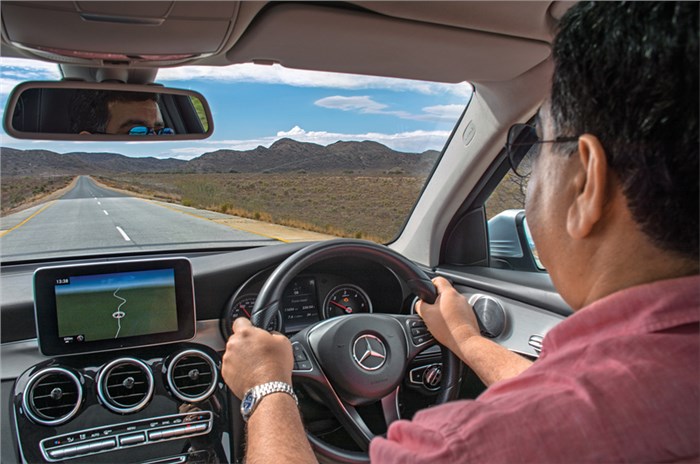

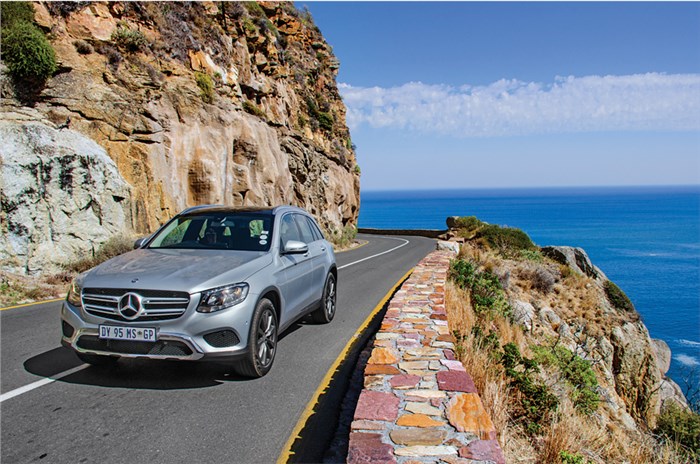


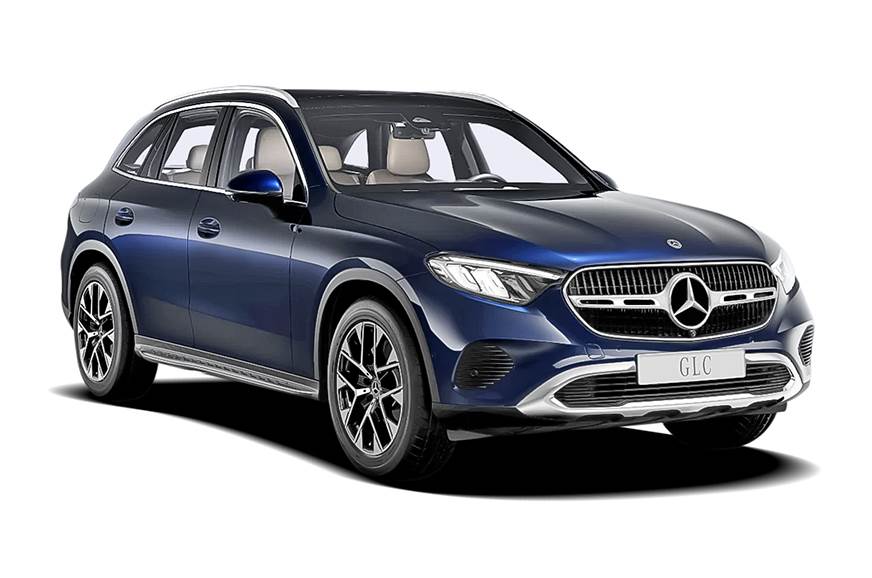
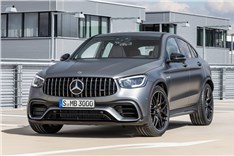
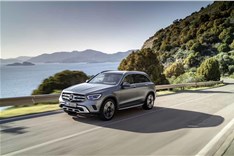
.jpg&w=234&h=156&q=90&c=1)





Comments
Member Login
Personal Details
No comments yet. Be the first to comment.